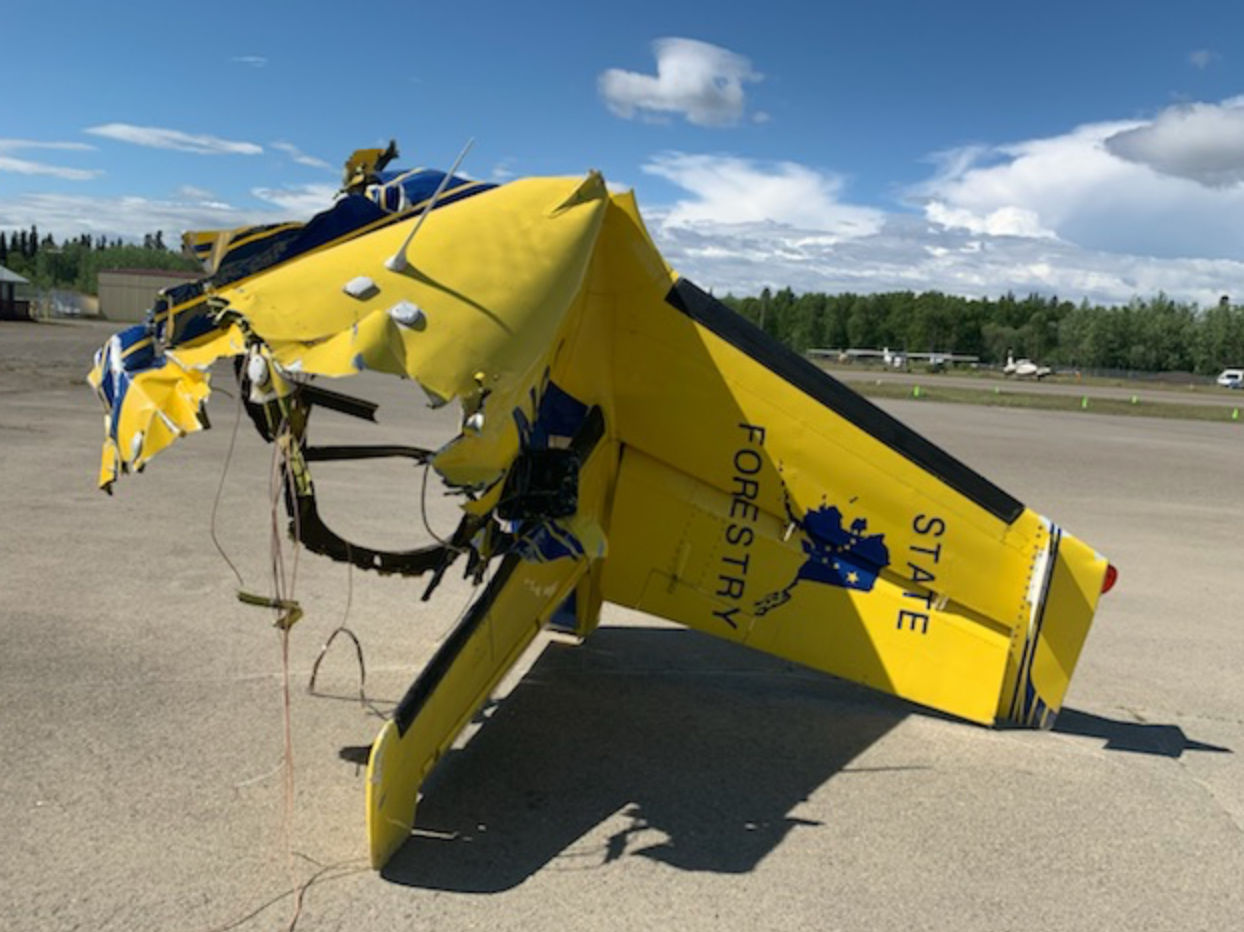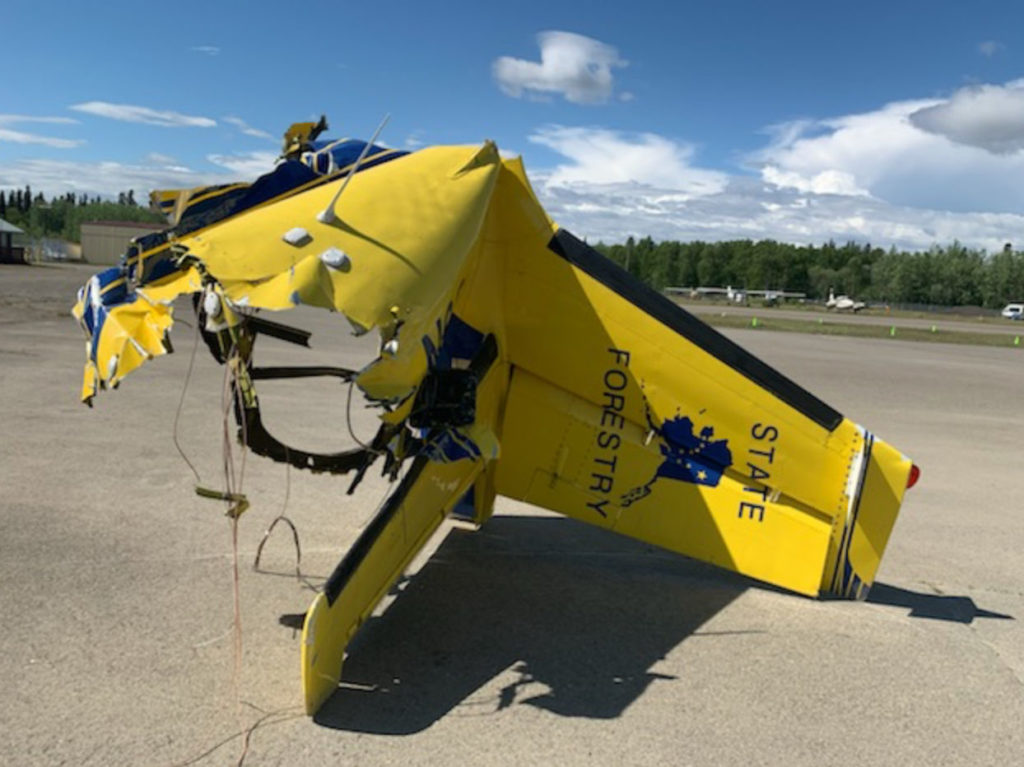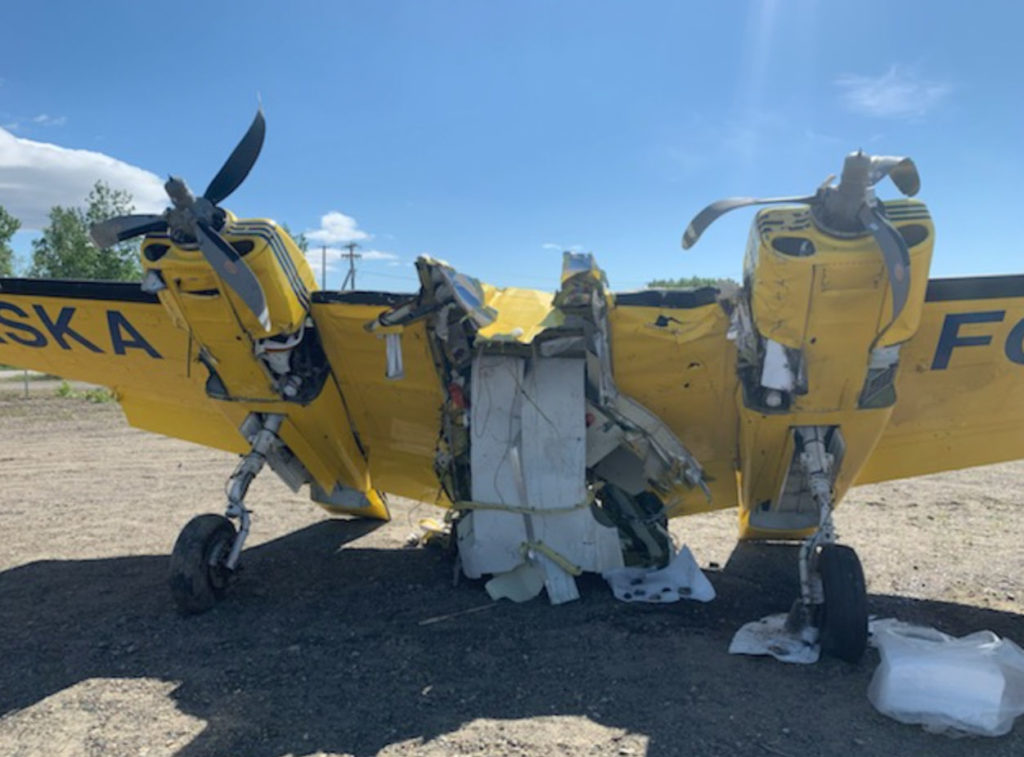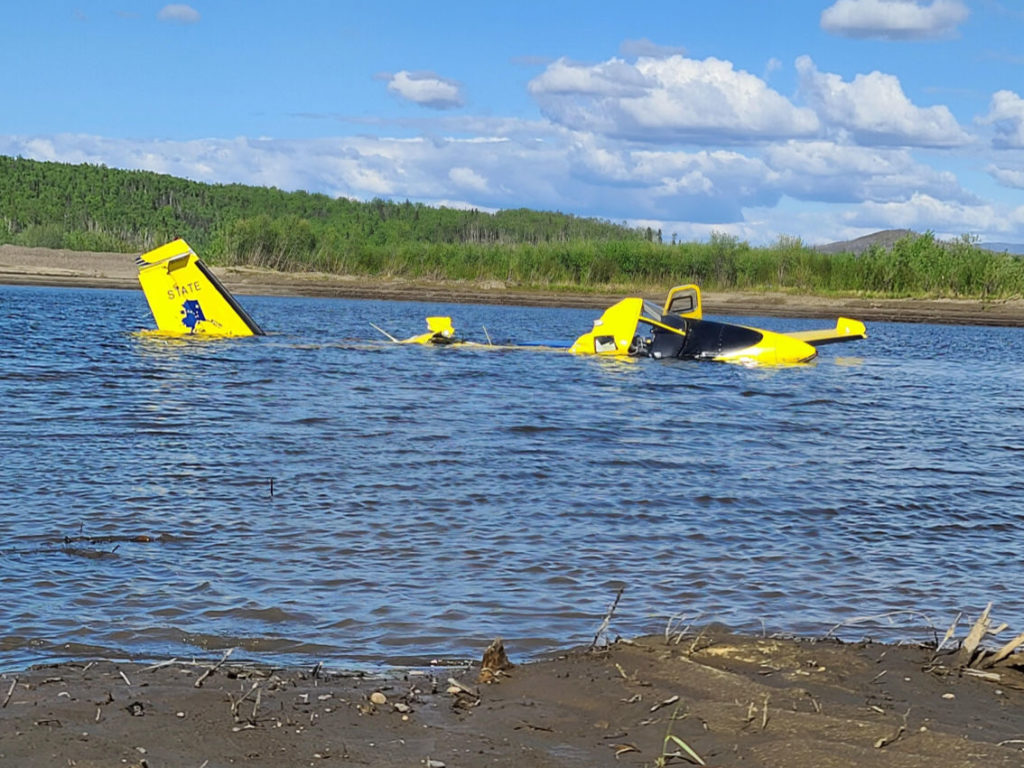PHOTOS FROM ANIAK WRECKAGE HAS PILOTS ASKING WHY
Four Division of Forestry employees were injured in a plane crash in the Western Alaska village of Aniak last Thursday afternoon, May 28. All were treated in an Anchorage hospital and the injuries of three of the passengers were considered serious, but not life-threatening.
But how the Division of Forestry plane crashed into the water shortly after takeoff from Aniak’s air strip is a mystery. More photos of the plane were released to Must Read Alaska today, as the aviation community is speculating whether the wrong type of fuel was used when the plane was fueled up in Aniak.
The plane is a state-owned Aero Commander 500 Shrike, which has a piston engine and does not run on typical kerosene jet fuel. That could explain why the aircraft lost power just one mile from the airport after takeoff, pilots have told MRAK.
The plane, owned and operated by the Division of Forestry, was transporting emergency firefighters from two western Alaska villages to support initial attack responses for the Kenai/Kodiak Area Forestry station. Their destination was Soldotna.
The National Transportation Safety Board is investigating the crash.





Looks like a ‘departure’ stall. Hit tail first. Departure stalls occur on takeoff. There is not sufficient altitude to recover and you hit the deck on your tail. Caused by too slow airspeed, too steep a climb, unbalanced load, overload, load shift, wind shear, take your pick. Minimal damage to the front of the aircraft and the fact that there are survivors supports this theory.
The fuel will be the first suspect in the NTSB investigation and most of the time its quick and easy to determine if it was misfueled. If it was misfueled, the NTSB can then take 12 months to write a report that should take two weeks. If the accident does not have a readily determinable cause, it will take longer.
Water in the fuel? Weights and balances? btw: Did the NTSB file a report on the cause of the crash on Denali two years ago? It was a sightseeing tour out of Talkeetna.
Why would you think it was misfueled? Hi octane avgas would be the standard out there. If it was piston driven that’s what it would use.
John: Power failure right after takeoff is typical of misfueling crashes. The planes typically have enough avgas in the lines to permit taxi and takeoff but fail as soon as the very limited amount of avgas left in the lines is consumed and the jet fuel reaches the cylinders. The investigators will look for jet fuel residue in the lines and tanks. Jet A is readily availible in Aniak and used by many commercial operators in helicopters and Cessna Caravans, etc.
Good post, Pete.
Good observation! There have been other accidents due to the wrong fuel or improperly selecting the fuel tank as pilots switch from one type of plane to another.
You are right on, Pete. A huge mistake that would put Jet A (kerosene) turbine fuel in a piston driven aircraft is rare but does happen. I have a little trouble thinking enough av-gas would be in the lines to taxi, take off and fly almost a mile. I’m no expert there, but the amount of gas required for the taxi, take off and to fly that far would be more than what was available in the lines at any one time. Certainly look for fuel discrepancies, but more detail will show up. Speculation is like assumption. Not always right.
There’s more Jet-A in rural areas than there used to be, simply because there are more turboprop singles hauling stuff out there than there used to be. Couple this with the fact that some Shrike Commanders have turbine power (and they don’t look all that different from the recip versions), then it’s not all that unreasonable to expect a misfuel event.
They’ll figure it out when the engines are torn down; piston engines that swallow kerosene will detonate themselves into destruction in just a few moments.
Clint Johnson and the rest of the small NTSB crew here in AK are all very intelligent and experienced investigators. I am completely confident that they will determine probable cause in due time. I am just thankful that there weren’t any fatalities, and wish the survivors a full and speedy recovery!
I believe that the young people who waded into the water to help with rescue stated that there was diesel fuel around them floating on the surface. Diesel fuel and jet fuel smell about the same. If this observation was accurate it would tend to point toward the plane having tge wrong fuel in its tanks. . It is always the Pilot’s responsibility to make sure the correct fuel is being used.
If set up properly a fuel nozzle for Jet A will not fit in an Avgas hole. Selling fuel to aircraft is fairly regulated and supposed to be inspected.
Misfueling still happens even though it’s theoretically not possible because of restrictors and other safety devices.